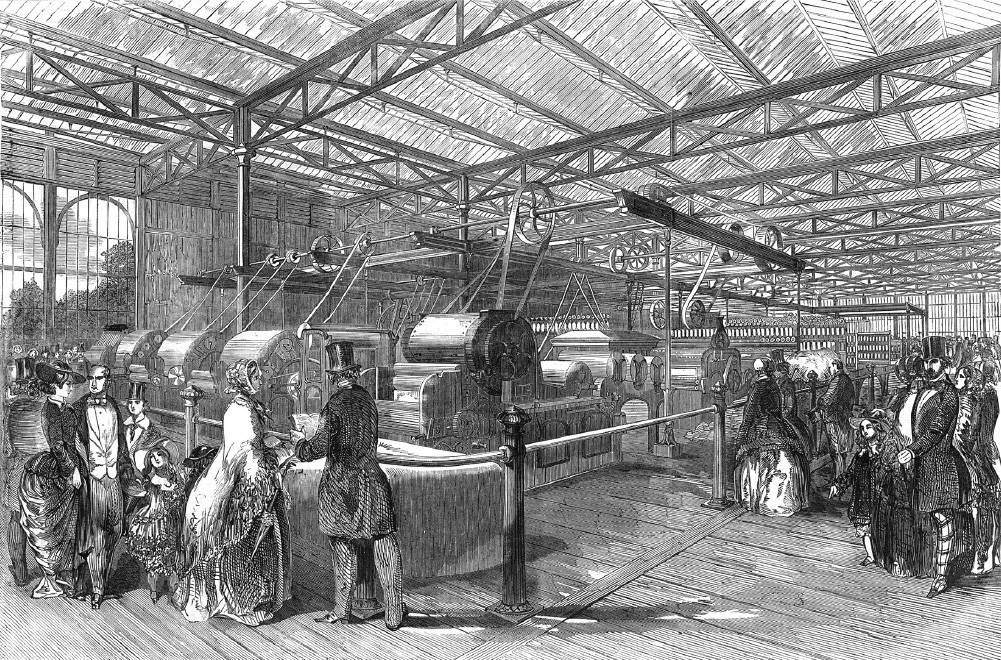Visual Source 17.1
The Machinery Department of the Crystal Palace
By the mid-nineteenth century, the Industrial Revolution and a growing global empire had generated for many people in Great Britain feelings of enormous pride, achievement, and superiority. Nowhere did that sensibility register more clearly than in the Crystal Palace Exhibition of 1851. Held in London, the exhibition was housed in a huge modernistic structure made of cast iron and glass and constructed in only nine months. It attracted more than 6 million visitors and contained some 14,000 exhibits from all around the world, allowing Britain to contrast its own achievements with those of “lesser” peoples. Visual Source 17.1, an engraving from the exhibition’s “machinery department” first published in a London newspaper, illustrates the growing tendency of Europeans to view “technology as the main measure of human achievement.”33

Question
What overall impression of Britain’s industrial technology was this engraving intended to convey? Notice the building itself as well as the machinery.
Question
How are the visitors to this exhibit portrayed? What segment of British society do you think they represent? What does their inclusion suggest about the beneficiaries of the Industrial Revolution?
Question
Why did technological development become such a prominent “measure of human achievement” in industrial age Europe? To what extent was this a new phenomenon?